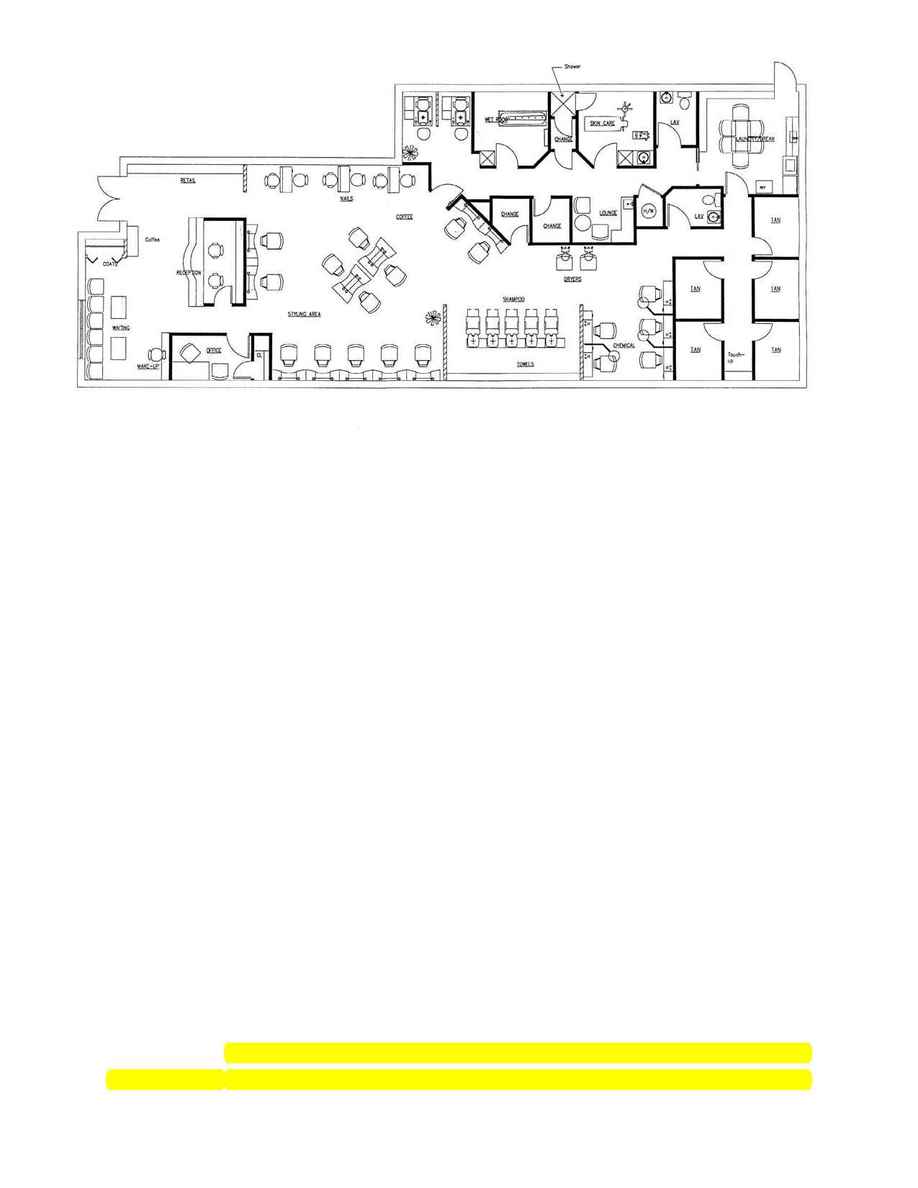
arrangement has an efficient traffic pattern. The best design requires the fewest steps for the client
and stylist to travel.
All salons require a reception area with seating and a desk for receiving clients, a dispen-
sary, a restroom and other service areas such as shampoo and drying areas
. In addition,
many salons have a retail display and promotion area, a lounge, laundry and utility room.
Develop a floor plan for a proposed location before trying to determine any details on cost of equip-
ment or interior decorating. If a location cannot be arranged with an efficient floor plan (with a min-
imum capital improvement cost), look at other locations. Salons can be installed with an investment
from $1,000 up to $10,000 per stylist. Weigh the cost of installation for the salon you want. Some-
times a location is priced right, with good traffic and the type of clientele desired, but the cost of
installation is too high. Examine many alternatives. Then work out the decorating details. Remem-
ber, this is YOUR salon. Make it one in which you'll enjoy working and one that will pay off.
Borrowing Money
After you have found a location, determined a suitable and affordable floor plan, determined the
cost of fixtures and estimated the capital improvements necessary, you must determine how much
money you will need to borrow. It is important to note that you should not sign a rental agreement
until you have received your loan approval. Your accountant should advise you of the operating
capital needed to open the salon and to pay the expenses of your business for at least six months.
Generally, you must be willing to invest some of your own money in the salon for an institution
to grant a loan. It is important to make all your loan payments on time to avoid default (failure
to repay), since you will be granted future loans based on your ability and willingness to do so.
158
SALON FUNDAMENTALS
Image courtesy of Belvedere
